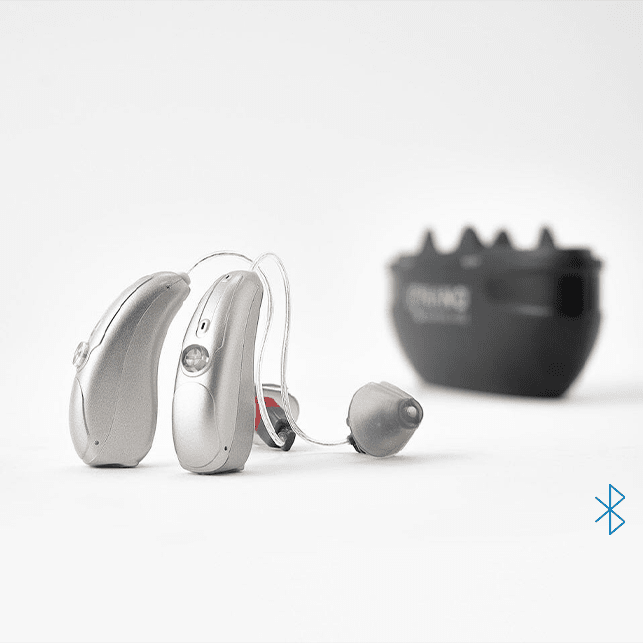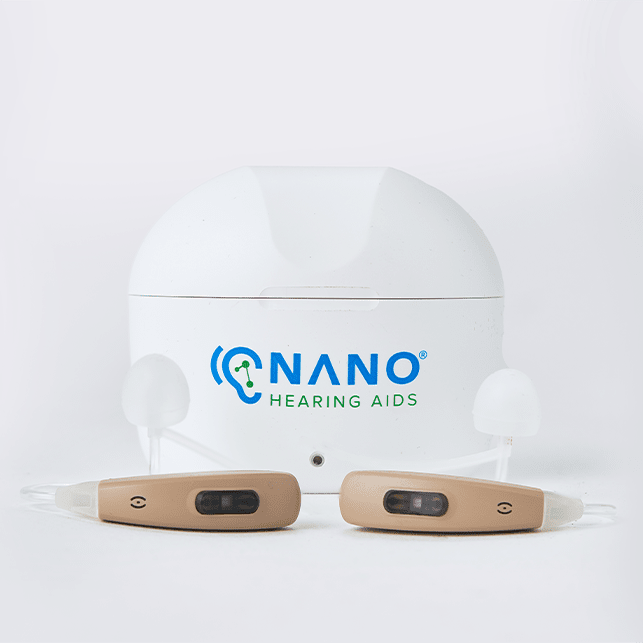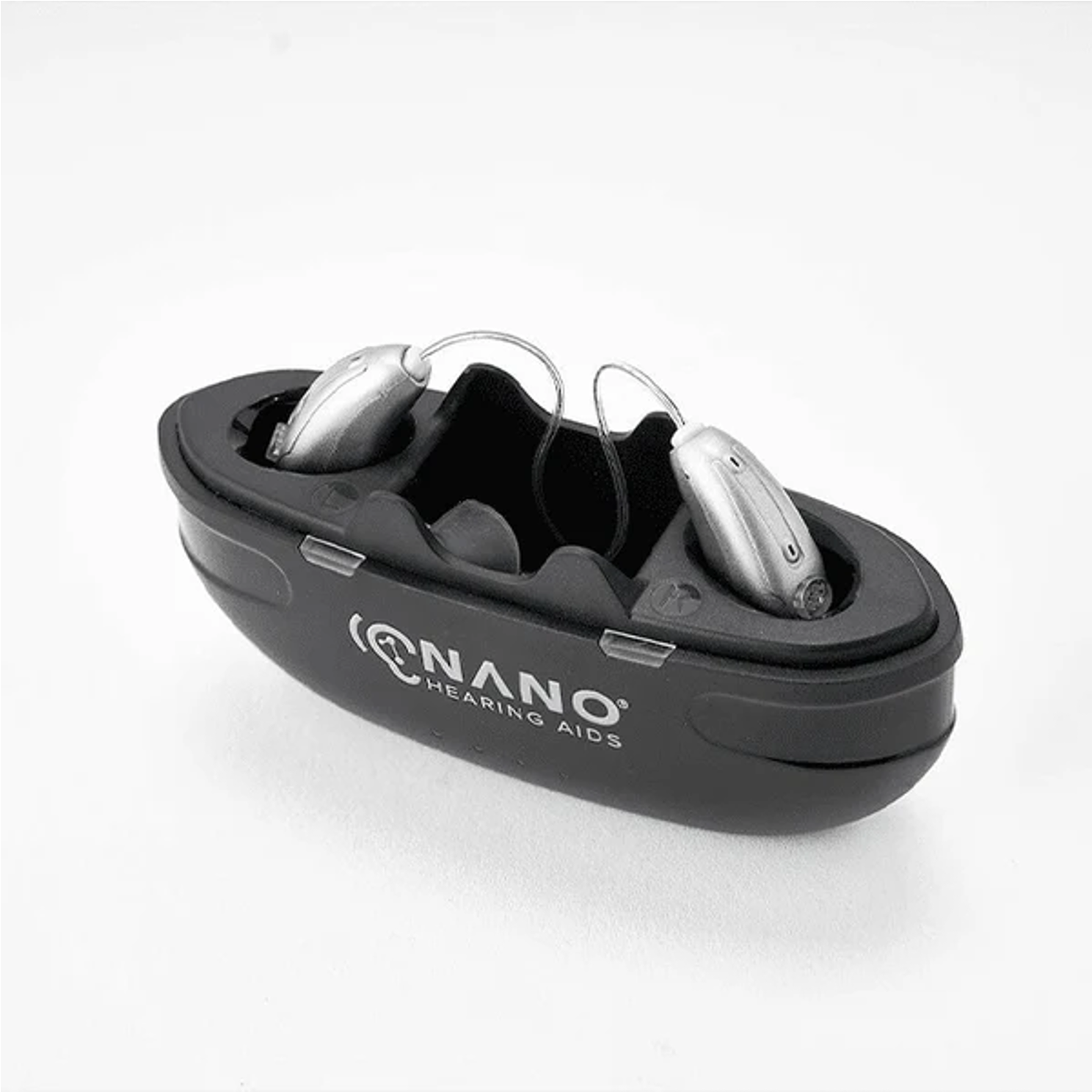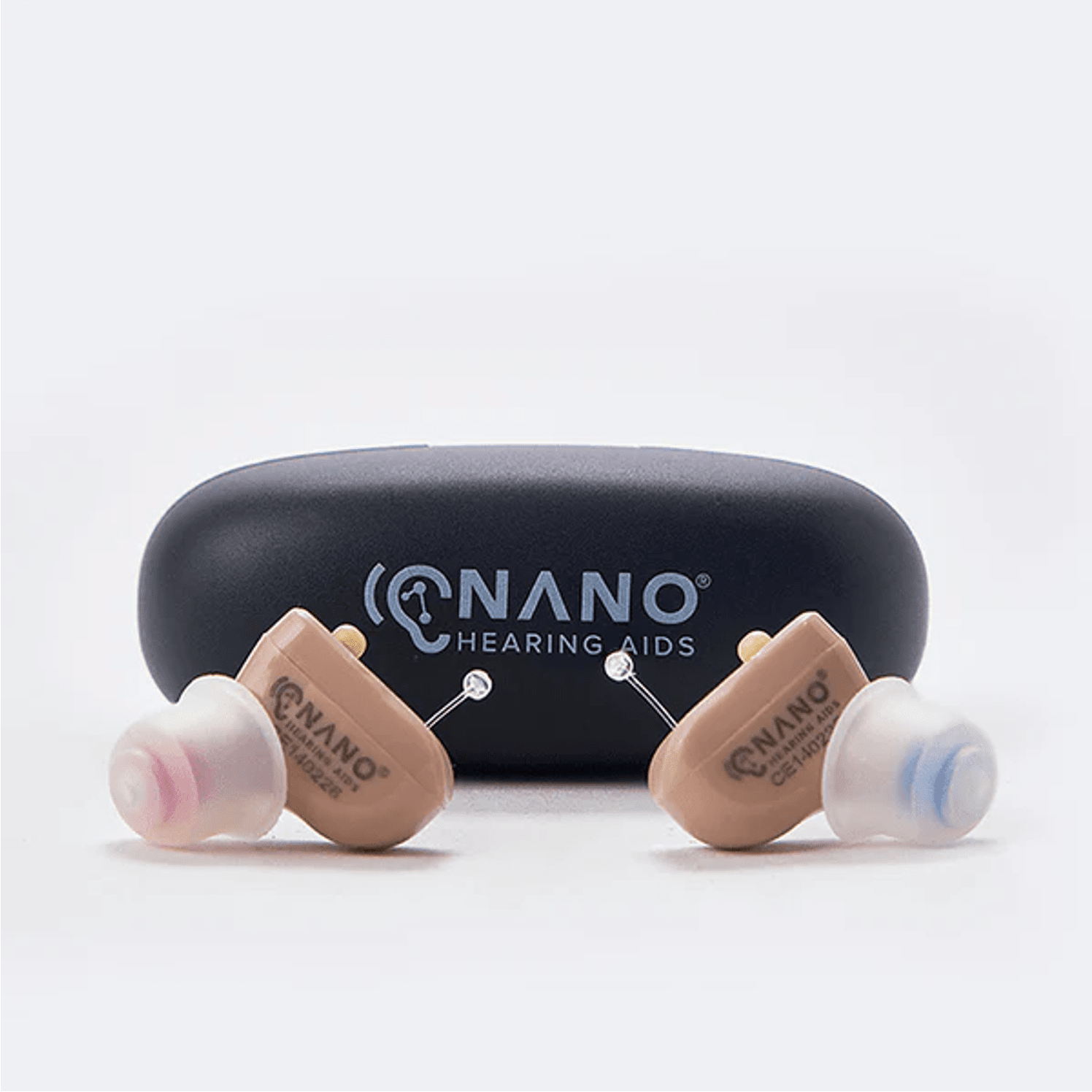Key Takeaways
- RIC hearing aids are traditionally smaller and more discreet than BTE hearing aids, though modern options tend to be similar in size.
- Both RIC and BTE hearing aid models can be purchased over-the-counter (OTC).
- RIC hearing aids often provide a more natural sound experience and less feedback.
- Nano offers FDA-registered, Class I RIC and BTE OTC hearing aids, including the First Ear Pro BTE with background noise-canceling technology and rechargeable batteries, and the Audacity RIC with app control and Bluetooth connectivity.
Nano Hearing Aids are FDA-registered, Class I devices. Our OTC hearing aids are designed for individuals over 18 years of age with perceived mild to moderate hearing impairment. With prices starting at just $297, they offer a viable solution for those looking to improve their hearing without breaking the bank.
What are RIC and BTE OTC Hearing Aids?
Receiver-in-canal (RIC) and behind-the-ear (BTE) OTC hearing aids are designed for adults with perceived mild to moderate hearing loss. Unlike prescription hearing aids, OTC hearing aids can be purchased without a prescription or a visit to an audiologist. Both RIC and BTE hearing aids feature a hard case behind the ear - which houses most of the device’s electronic components.
RIC hearing aids are often designed to be more discreet, though modern BTE models have become comparable in size. The receiver is located in the ear canal and is connected to the main body by a thin wire. This setup provides a more natural sound experience, with the receiver closer to the eardrum. RIC hearing aids are preferred for their low visibility, and for their more natural sound.
BTE hearing aids typically have a case that sits behind the ear, with sound delivered to the ear canal either through a thin wire or tube, depending on the model. This design allows for more powerful amplification. The larger size of BTE hearing aids generally provides easier handling, but modern advances in RIC models now allow similar features and battery life without the need for a larger case.
Features of RIC and BTE OTC Hearing Aids
Design and Appearance
RIC hearing aids are sleek and discreet, featuring a thin wire connecting the receiver to the main body, which is less noticeable than the tubing in BTE hearing aids. This design makes RIC hearing aids popular among those concerned about appearance.
BTE hearing aids are larger and more robust. Their size makes them easier to handle, benefiting individuals with dexterity issues.
Sound Quality and Feedback Management
RIC hearing aids deliver a more natural sound experience - thanks to the receiver being closer to the eardrum. This design provides clearer sound and minimizes feedback.
BTE hearing aids, though powerful, may encounter feedback due to the distance between the microphone and the receiver. However, modern BTE models feature advanced feedback management systems to address this issue.
Battery Life and Power Options
RIC hearing aids, being smaller, typically have shorter battery life. However, many manufacturers offer rechargeable options.
Connectivity Options
Many RIC and BTE hearing aids offer connectivity options, often including Bluetooth technology. This enables streaming of phone calls, music, and other audio directly to your hearing aids, ensuring a seamless listening experience for frequent phone and tablet users.
Tinnitus Management Features
Tinnitus, or ringing in the ears, affects many people with hearing loss. Both RIC and BTE hearing aids can include tinnitus management features - such as sound therapy or masking sounds - to help alleviate symptoms.
Pros & Cons of RIC and BTE OTC Hearing Aids
Pros and Cons of RIC Hearing Aids

Pros and Cons of BTE Hearing Aids
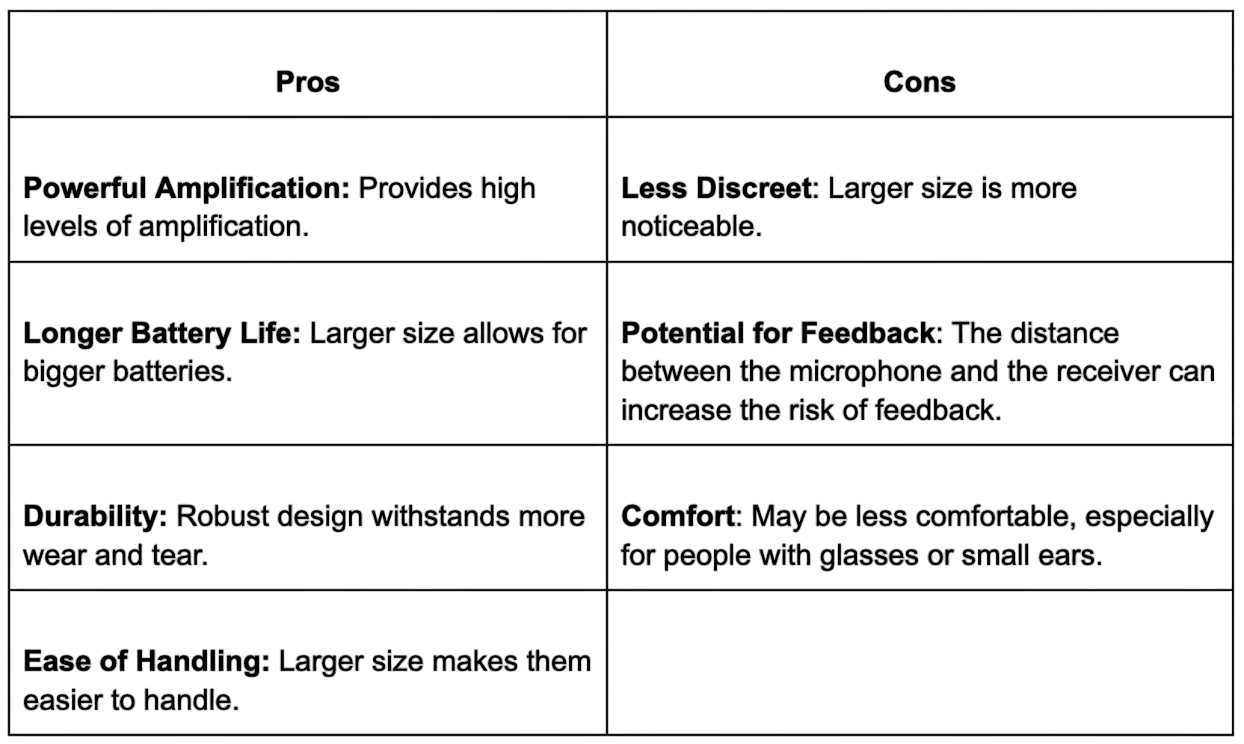
Price Comparison Between RIC and BTE OTC Hearing Aids
Average Prices of RIC OTC Hearing Aids
RIC hearing aids start from $200 and can go up to $1,000 per device. The cost varies based on features and brand - advanced technology and a discreet design contribute to the higher price. The investment often results in superior sound quality and user experience.
Average Prices of BTE OTC Hearing Aids
BTE hearing aids start from $150 and range up to $800 per device. Despite the lower price, BTE hearing aids offer excellent value and advanced features.
Suitability for Various Hearing Loss Levels
- Perceived Mild to Moderate Hearing Loss: RIC hearing aids offer a natural sound experience and a discreet design.
- Severe Hearing Loss: BTE hearing aids provide powerful amplification and may offer larger battery capacity, which means they may be more suitable for individuals with severe hearing loss (always check with the manufacturer, as OTC devices are only suitable for perceived mild to moderate hearing loss).
Nano First Ear Pro BTE offers a portable charging case and customizable ear-tips for comfort and ease of use
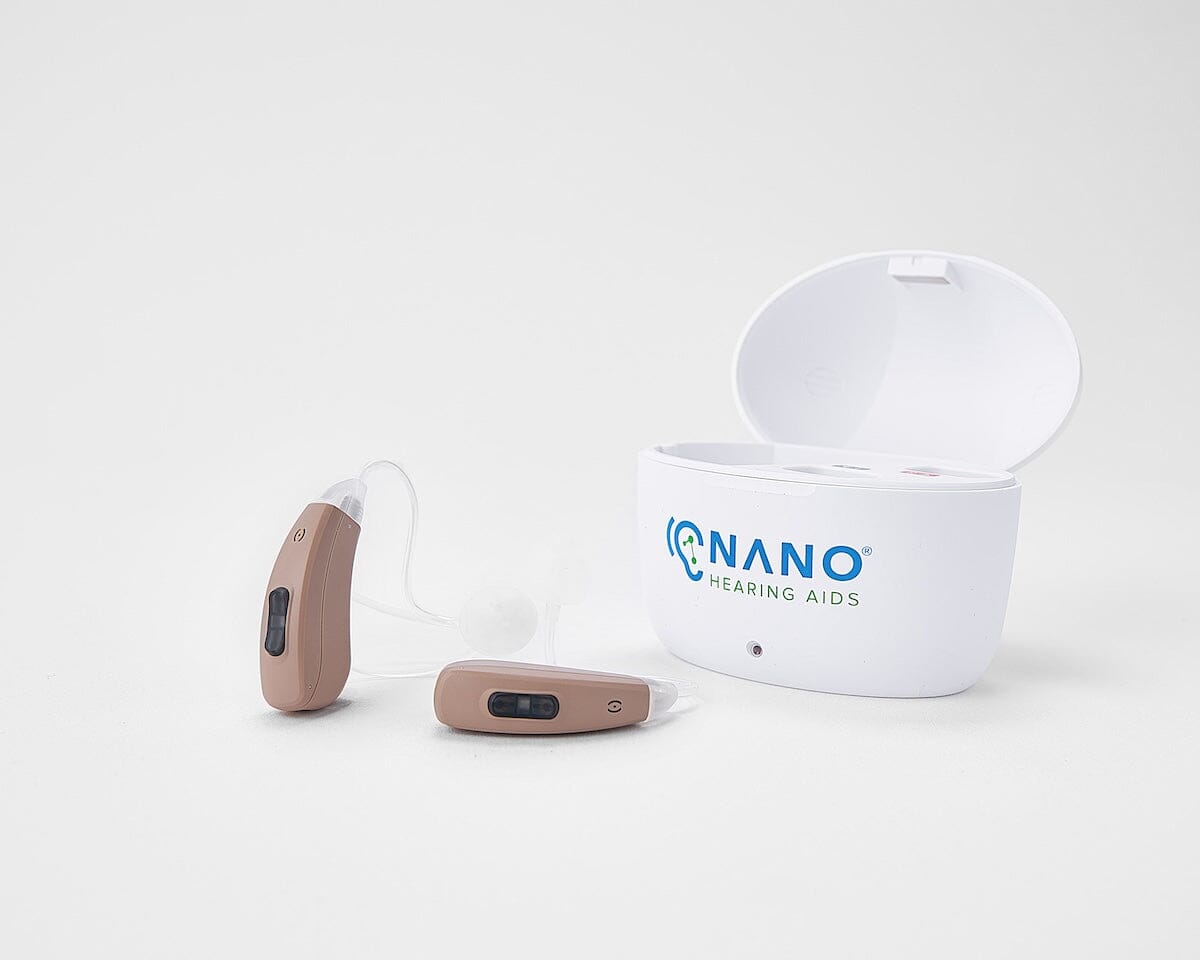
Benefits of RIC and BTE OTC Hearing Aids
Improved Social Interaction
Hearing aids amplify sounds and enhance speech clarity, enabling better conversation engagement and reducing isolation from hearing loss.
Enhanced Quality of Life
Better hearing leads to a more active lifestyle - making activities like movies, social events, or conversations with loved ones more enjoyable and less stressful.
Ease of Use and Convenience
Many modern hearing aids, whether RIC or BTE, include features such as Bluetooth connectivity, rechargeable batteries, and customizable settings. Bluetooth enables seamless audio streaming from phones, tablets, and other devices. Customizable settings allow for personalized adjustments.
Affordability and Accessibility
OTC hearing aids offer a cost-effective solution for perceived mild to moderate hearing loss, eliminating the need for a prescription or audiologist visit.
Nano Audacity RIC OTC hearing aids are designed for clarity, with directional microphone technology and feedback cancellation.
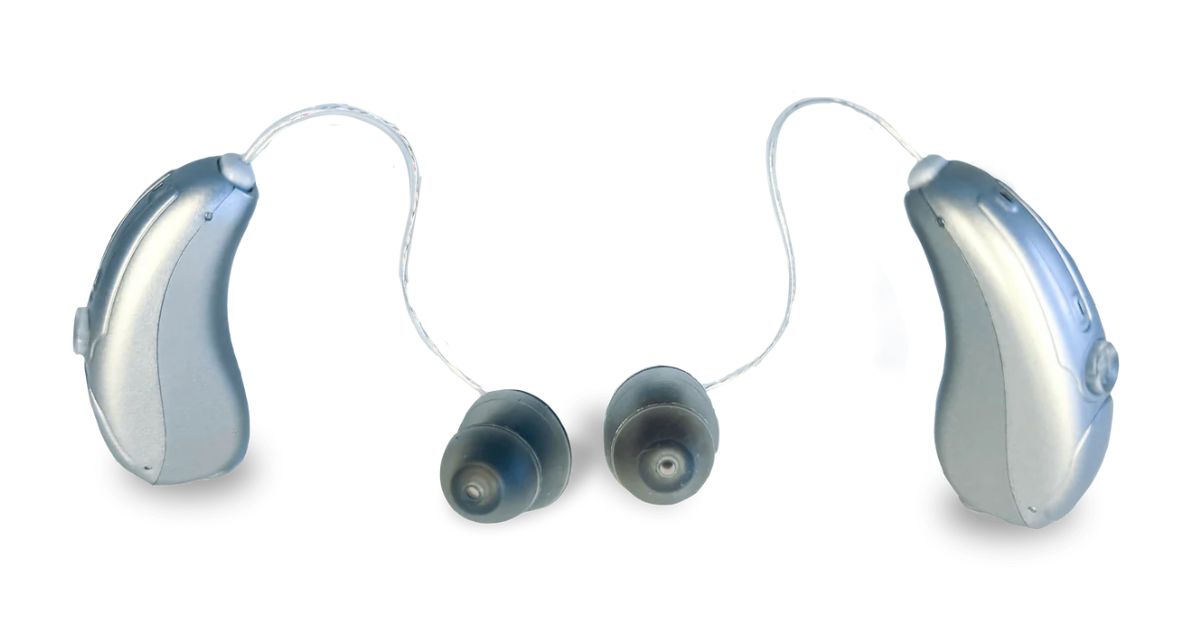
How Nano Hearing Aids Are Different
At Nano Hearing Aids, we offer FDA-registered Class I hearing devices for adults with perceived mild to moderate hearing loss.
We offer both RIC and BTE models.
Consider Nano Audacity RIC for discreet, customizable support with features like app control, Bluetooth capability, and feedback cancellation, and the Nano First Ear Pro BTE for robust performance with user-friendly controls.
Our hearing aids feature rechargeable batteries and have several listening programs. We also provide 24/7 customer support to enhance your hearing aid experience.
Frequently Asked Questions (FAQ)
How do I choose between RIC and BTE hearing aids?
Choosing between RIC and BTE hearing aids depends on your needs and preferences. For a discreet design, RIC hearing aids are ideal. If you need a more durable, powerful device, BTE hearing aids are more suitable - though many modern options are quite similar in size and battery capacity.
Can I use OTC hearing aids without a prescription?
Yes, OTC hearing aids can be purchased and used without a prescription. They are designed to be user-friendly, allowing individuals to adjust them to their needs without professional intervention.
What is the average price difference between RIC and BTE hearing aids?
RIC hearing aids are generally slightly more expensive than BTE hearing aids due to their smaller size and advanced technology. Both types are available at various price points, allowing you to find a device that fits your budget.
Are OTC hearing aids as effective as prescription hearing aids?
OTC hearing aids can provide excellent sound processing and amplification. While they may lack the same level of customization and professional fitting as prescription hearing aids, they may be effective for many individuals with perceived mild to moderate hearing loss.
Why Should I Choose Nano Hearing Aids?
Our devices have rechargeable batteries, feedback cancellation, and advanced features like Bluetooth streaming, available in some models. We provide a 45-day money-back guarantee, a one-year warranty, and 24/7 customer support.

